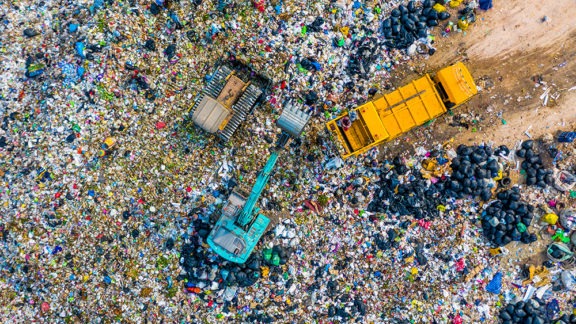Update: The EPA has released its anticipated funding levels and grant numbers for the FY2026 Brownfields grant competition, which is expected to open in September. This year’s competition will feature up to 26 large cleanup grants (up to $4 million) and only 10 smaller cleanup grants (up to $500,000). This marks a significant departure from recent history: Since 2023, the EPA has awarded only 8 to 10 $4 million cleanup grants annually.
While there is a great deal of uncertainty surrounding federal funding, the Environmental Protection Agency’s (EPA) Brownfields Program has continued to function without significant interruptions. The EPA will release another request for applications for brownfields grants this fall — likely the last in which the agency will offer historically large grants made possible by the Bipartisan Infrastructure Law (BIL).
That money needs to go somewhere, so why not bring it to your community? In the article that follows, we’ll review what the EPA’s brownfields grants can support, what an application requires, and what steps to take now to give your application an edge.
What brownfields grants are, and why to apply this year
On May 16, the agency announced the results of its FY2025 brownfields grant competition. It awarded 214 grants worth $224 million to 207 tribes, nonprofits, and local governments. Haley & Aldrich authored two grants that won $1.7 million for public entities in two states.
These grants support projects that revitalize brownfields, parcels of land that are perceived to be or are contaminated, and where reinvestment has been stymied because of environmental liability concerns. The EPA estimates that the United States has between 450,000 and 1 million brownfields, but other organizations put the number even higher. Frequently, brownfields sit vacant and are sources of blight that pose risks to human and environmental health. They also drain public resources by attracting dumping and other undesirable behaviors that require police and fire response. Moreover, brownfields represent an opportunity cost due to lost tax revenue, lack of investment, and reduced economic activity.
Brownfield redevelopment generates environmental, social, and economic benefits, and it has received bipartisan support on Capitol Hill since the Brownfields Program debuted in the mid-1990s. In 2021, the Brownfields Program received a massive boost from the BIL. This law pumped $1.5 billion into the Brownfields Program over the course of five years, or $300 million per year in addition to existing congressional appropriations. The availability of Brownfields funding grants soared, and so did the sizes of grant awards, up to $1.2 million for assessment grants and up to $4 million for cleanup grants. In addition, BIL funding removed the need for a 20 percent match for cleanup grants.
Now the BIL is about to sunset; its funding must be obligated by September 30, 2026, the end of the federal fiscal year. That means the 2025 EPA brownfields grant competition will likely be the last opportunity to bring home a significant chunk of these resources. The EPA Brownfields Program will continue into the future, but without this BIL boost, future funding levels will depend solely on congressional appropriations, which have averaged $160 million per year over the past 10 years.
The nuts and bolts of the EPA’s brownfield grants program
In general, public, tribal, and nonprofit entities are eligible to apply for brownfields funds. Private entities can support those efforts in multiple ways, as we’ll share in an upcoming post.
Several types of grants exist:
- Assessment grants allow applicants to investigate multiple sites, either on their own (community-wide assessment grants) or in partnership with other government and nonprofit entities (coalition assessment grants). This fall, we anticipate that awards being offered may range from $500,000 to $1.2 million with no match required.
- Cleanup grants support environmental remediation. This fall, we anticipate awards ranging from $500,000 to $4 million with no match required.
- Multipurpose grants support both assessment and cleanup. Most multipurpose grants have historically been $800,000, although they can reach up to $1 million.
- Revolving Loan Fund grants allow applicants to create a loan and subgrant program where funds are used for site cleanup. These are $1 million grants that, once funded, can receive additional funding with limited competition.
Assessment and multipurpose grants are particularly flexible because in addition to supporting environmental site assessments — and in the case of multipurpose grants, cleanup activities — this funding can support the development of brownfields inventories, community engagement, and reuse planning — the last of which could include redevelopment market analyses, site feasibility studies, and infrastructure evaluations. In past competitions, the EPA has encouraged assessment grant applicants to dedicate up to 30 percent of proposed funds to reuse planning.

EPA brownfields funding helps revitalize property in St. John. Photo by Port of Whitman County
From contaminated site to community clinic
EPA brownfields funding is revitalizing a property owned by the Port of Whitman County in Washington state. The port used an EPA community-wide assessment grant to conduct Phase I and Phase II Environmental Site Assessments at a former gas station and café in the rural town of St. John. In May 2025, the port received a $500,000 EPA cleanup grant to help turn the site from a brownfield into a community health clinic. Haley & Aldrich played a critical role in guiding the Port’s application for and implementation of EPA Brownfields funding.
Preparing to apply
An application for EPA brownfields funding is a significant undertaking, and planning early is essential. Regardless of the type of funding for which you intend to apply, there are steps you can take today to prepare:
- Get educated and gather information.
- Read previous notices of funding opportunities to understand what the EPA has required in the past.
- Identify your target sites.
- Whether applying for assessment or cleanup funding, identify your target sites. Assessment grants do not require grantees to own sites, but having a relationship with a property owner is helpful. Cleanup grants require that applicants hold fee simple title and are not responsible for contamination. Understand the requirements and their implications for your situation.
- Make friends first.
- Socialize your potential project with your regional EPA brownfields team and with your state brownfields staff and seek their feedback. Be aware that once the EPA’s call for applications opens, EPA staff will be much more limited in their ability to discuss your application.
- Identify your partners.
- It takes a village to redevelop a brownfield. Start building yours now, ideally including a variety of public, nonprofit, and community-based groups—and if you have private partners, list them too. The EPA has historically required applicants to articulate a list of partners and their roles, which might include supporting community outreach, providing technical assistance, or hosting meetings. Building these relationships now provides a critical boost come application time.
Historically, the EPA’s brownfields grant application period opened in September and closed after at least 60 days, with grants typically due in November or early December. With the end of historically large awards on the horizon, this is the year to apply, and a strong grant application starts now. For more information or to brainstorm, please get in touch with us.
Published: 7/23/2025
- Government infrastructure
- Government facilities
- Ports, harbors, and coastal Infrastructure
- Brownfields
- Contaminated site management
- Environmental due diligence
- Environmental risk assessment
- Site characterization
- Remediation
Authors

Technical Expert

Technical Expert, Hydrogeologist




